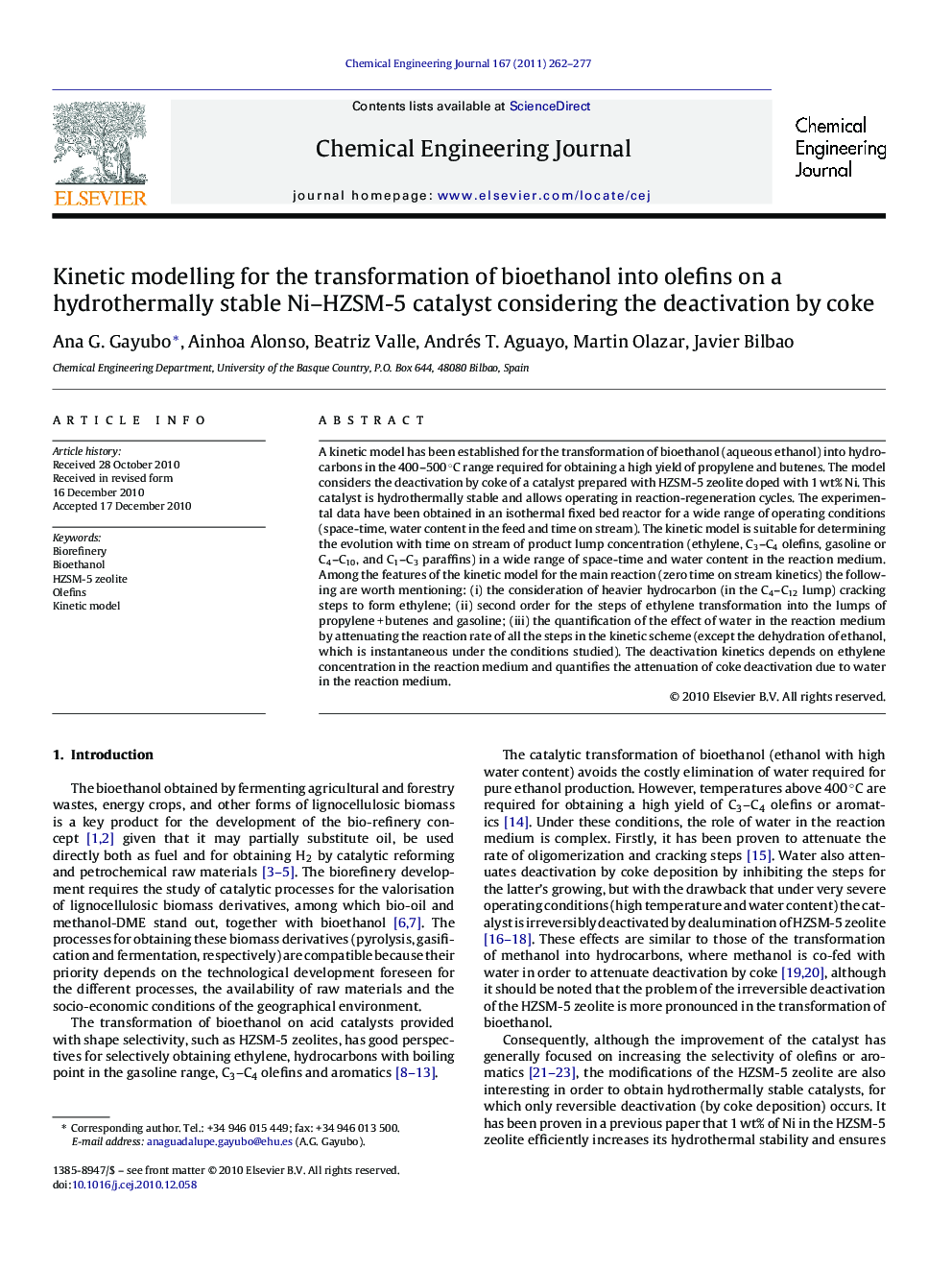| Article ID | Journal | Published Year | Pages | File Type |
|---|---|---|---|---|
| 151632 | Chemical Engineering Journal | 2011 | 16 Pages |
A kinetic model has been established for the transformation of bioethanol (aqueous ethanol) into hydrocarbons in the 400–500 °C range required for obtaining a high yield of propylene and butenes. The model considers the deactivation by coke of a catalyst prepared with HZSM-5 zeolite doped with 1 wt% Ni. This catalyst is hydrothermally stable and allows operating in reaction-regeneration cycles. The experimental data have been obtained in an isothermal fixed bed reactor for a wide range of operating conditions (space-time, water content in the feed and time on stream). The kinetic model is suitable for determining the evolution with time on stream of product lump concentration (ethylene, C3–C4 olefins, gasoline or C4–C10, and C1–C3 paraffins) in a wide range of space-time and water content in the reaction medium. Among the features of the kinetic model for the main reaction (zero time on stream kinetics) the following are worth mentioning: (i) the consideration of heavier hydrocarbon (in the C4–C12 lump) cracking steps to form ethylene; (ii) second order for the steps of ethylene transformation into the lumps of propylene + butenes and gasoline; (iii) the quantification of the effect of water in the reaction medium by attenuating the reaction rate of all the steps in the kinetic scheme (except the dehydration of ethanol, which is instantaneous under the conditions studied). The deactivation kinetics depends on ethylene concentration in the reaction medium and quantifies the attenuation of coke deactivation due to water in the reaction medium.
